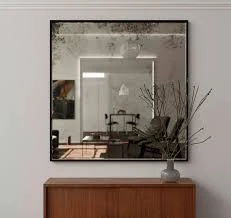

Understanding Slumping Float Glass Characteristics and Applications
Float glass is a type of glass that is manufactured by floating molten glass on top of molten tin, creating a smooth and uniform surface. This method produces a flat and clear product that is ideal for windows, doors, and various architectural applications. However, when discussing float glass, it is crucial to consider not just its manufacturing process but also its various forms, including slumping float glass.
Slumping float glass refers to the process where flat sheets of float glass are heated and manipulated to achieve a curved or contoured shape. This transformation is often utilized in artistic glasswork, architectural elements, and functional pieces. The slumping process takes advantage of the glass's malleability when heated to specific temperatures, allowing it to conform to molds or to sag into desired shapes.
The characteristics of slumping float glass are distinctive. Firstly, the transparency and optical clarity remain intact, making it suitable for applications where visual aesthetics are vital. Secondly, the process typically preserves the smooth surface finish that is a hallmark of float glass, reducing the need for additional polishing after shaping. The ability to create organic and flowing forms means that slumped glass can be used creatively in both modern and traditional design contexts.
One of the primary applications of slumping float glass is in architectural design. Designers and architects are increasingly using slumped glass to create striking facades, interior features, and decorative elements that enhance visual interest. For instance, slumped glass can be found in modern building designs as part of curtain walls, skylights, and partitions, where its light-transmitting properties add a dynamic quality to spaces.

In addition to architecture, slumped float glass is popular in the art world. Glass artists often use slumping techniques to create unique sculptures, bowls, and wall pieces. The ability to mold glass into diverse shapes allows artists to explore creativity, producing pieces that engage with light and space in captivating ways. Furthermore, advances in kiln technology and glass types have made it easier for artists to experiment with various techniques and designs, broadening the artistic potential of slumped glass.
The manufacturing process of slumped float glass also involves careful temperature control and timing. Typically, the glass will be heated in a kiln to around 1,200 degrees Fahrenheit (approximately 650 degrees Celsius). At this temperature, the glass becomes soft enough to be formed but not so hot that it loses its structural integrity. Molds made from materials such as ceramic or sand can be used to shape the glass during this process, allowing for intricate designs to be achieved.
There are also considerations regarding the sustainability of using glass in architecture and art. As the world moves towards eco-friendly practices, there is a growing emphasis on using recycled glass materials and energy-efficient processing techniques. The durability of float glass, combined with its recyclability, makes it a viable option for sustainable design.
In conclusion, slumping float glass offers a versatile and visually appealing material that bridges the gap between functionality and aesthetics. Its applications in architecture and art showcase its transformative properties while maintaining the clarity and smoothness inherent in the float glass manufacturing process. As technology advances, the potential for innovative designs using slumped float glass will continue to expand, enriching both architectural endeavors and artistic expression.